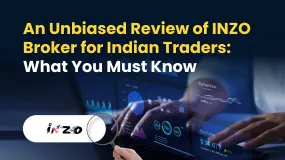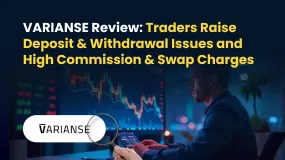简体中文
繁體中文
English
Pусский
日本語
ภาษาไทย
Tiếng Việt
Bahasa Indonesia
Español
हिन्दी
Filippiiniläinen
Français
Deutsch
Português
Türkçe
한국어
العربية
Explained: Why the Singapore dollar is so strong against the ringgit?
Abstract:An in-depth examination of the diverse economic strategies that have played a role in the continuous expansion of the disparity between the two currencies.

The Malaysian ringgit and the Singapore dollar were once equivalent in value and freely exchangeable, but this changed in 1973. Since then, the ringgit's value has steadily declined, hitting a new low in June when it reached RM3.4384 against one Singapore dollar.
What led to this situation? WikiFX delves into the various economic and fiscal policies that have played a role in the widening gap between the MYR and SGD.
How it began
In May 1973, Malaysia made the decision to exit a currency interchangeability agreement it had with Singapore and Brunei. Under this agreement, the currencies of these three nations were of equal value and could be freely exchanged.
Economist Yeah Kim Leng, affiliated with Sunway University, attributes Malaysia's departure from this agreement to a combination of international influences and domestic economic conditions. During the 1970s, the global financial landscape was undergoing significant changes, primarily due to the United States' abandonment of the gold standard. This shift in international monetary dynamics played a role in Malaysia's decision-making.
At that time, Malaysia had specific priorities. They aimed to establish an independent monetary policy and implement a flexible exchange rate system, which they believed would be more conducive to their domestic development goals. In contrast, Singapore, known for its highly open and trade-dependent economy, continued to prioritize its exchange rate as a primary policy instrument. Yeah Kim Leng serves as a member of the finance ministry advisory committee.
Fall of the ringgit
According to Afzanizam Rashid, the chief economist at Bank Muamalat Malaysia Bhd, the ongoing depreciation of the ringgit compared to the Singapore dollar can be attributed to the differing strategies employed by the two nations in tackling inflation.
He explained that the Monetary Authority of Singapore takes proactive measures to intervene in the foreign exchange market, ensuring that the Singapore dollar's exchange rate with the US dollar remains within a predetermined policy band.
Singapore prioritizes the management of its exchange rate due to its status as a trade-dependent island nation that heavily relies on imports to offset its scarcity of natural resources.
This approach of controlling the currency provides Singapore with a more effective means of managing inflation, according to experts.
In contrast, Malaysia employs price control mechanisms and subsidies as the primary tools to curb inflation within its economy.
Afzanizam Rashid highlights that attempting to switch to an interest rate targeting method could potentially result in limited effectiveness in transmitting exchange rate adjustments to achieve inflation control in Malaysia's context.
Negative consequences
Given the stronger Singapore dollar, it comes as no surprise that a significant number of Malaysians venture across the Johor straits in pursuit of higher-paying jobs in Singapore, capitalizing on the favorable exchange rate to bolster their savings.
Approximately 1.86 million Malaysians reside abroad, with roughly 1.1 million of them being in Singapore.
In addition to talent emigration to Singapore, the depreciated ringgit can also result in what is known as “imported inflation,” particularly impacting Malaysia's agriculture and food sectors.
Malaysia has been consistently reliant on imported food, making imported inflation particularly noticeable when the local currency weakens, especially on items that aren't subject to price controls or subsidies.
Furthermore, individuals who have sent their children overseas for education must allocate additional funds for tuition fees and living expenses due to the weakened ringgit.
No easy way out
Yeah emphasized that there isn't a quick-fix solution that can rapidly bridge the gap between the ringgit and the Singapore dollar because currency strength is intricately tied to a nation's economic fundamentals.
He explained, “When a country can boost its income and production, enhance productivity collectively, and possesses robust underlying factors like a trade surplus, a solid fiscal position, and increasing reserves, then the ringgit will naturally strengthen against the SGD.”

Disclaimer:
The views in this article only represent the author's personal views, and do not constitute investment advice on this platform. This platform does not guarantee the accuracy, completeness and timeliness of the information in the article, and will not be liable for any loss caused by the use of or reliance on the information in the article.
Read more

Inzo Broker Review 2025: A Complete Look at Features, Costs and User Claims
Inzo Broker presents itself as a modern forex and CFD broker, started in 2021 and registered in Saint Vincent and the Grenadines. At first glance, it offers an attractive package for traders: access to the popular MetaTrader 5 (MT5) and cTrader platforms, different types of accounts for various budget levels, and a wide selection of assets to trade. These features are made to attract both new and experienced traders. However, a closer look shows a big difference between these advertised benefits and the real risks. The broker works under an offshore regulatory system, which gives limited protection to investors. More importantly, Inzo has collected many serious user complaints, especially about withdrawing funds and changing trading conditions unfairly. This mix of weak oversight and serious user claims creates a high-risk situation that potential clients must carefully think about. This review will break down these parts to give a clear, fact-based view.

An Unbiased Review of INZO Broker for Indian Traders: What You Must Know
INZO is a fairly new company in the online trading world. It started in 2021 and is registered in Saint Vincent and the Grenadines. Traders in India and around the world have noticed this broker because it offers access to popular trading platforms such as MetaTrader 5 (MT5) and cTrader. It also lets you trade many different things, such as foreign currencies, stocks, and digital currencies. The broker tries to be easy to use with features such as a low minimum deposit, which can be appealing to new traders. However, when you look more closely, the situation becomes more complicated. INZO operates as an offshore-regulated company, which brings certain risks that every trader needs to understand. Also, user feedback is very mixed - there are many serious complaints alongside some positive experiences. Read on this in-depth review of the broker.

VARIANSE Review: Traders Raise Deposit & Withdrawal Issues and High Commission & Swap Charges
Are you losing both while depositing and withdrawing your capital at VARIANSE? Does the broker give the currency conversion rate excuse for this? Have you been trapped with spreads charged higher than promised? Do you bear steep commission and swap charges at this broker? Traders frequently report these trading issues online. In today’s VARIANSE broker review, we have shared some trading complaints that have grabbed everyone’s attention. Take a look.

Uniglobe Markets Bonus Review: Understanding the Offers and Uncovering the Risks
Many traders start looking for a new broker by searching for special deals and bonuses. The phrase "Uniglobe Markets no deposit bonus" is something people often search for. Let's address this question clearly and directly. Based on all the information we have, Uniglobe Markets does not currently offer a no-deposit bonus. Instead, this broker focuses on bonuses that require you to deposit your own money first. To get any bonus credits, traders must put in their own capital. Read on to learn how this entire bonus works out for traders.
WikiFX Broker
Latest News
Forex Expert Recruitment Event – Sharing Insights, Building Rewards
Admirals Cancels UAE License as Part of Global Restructuring
Moomoo Singapore Opens Investor Boutiques to Strengthen Community
OmegaPro Review: Traders Flood Comment Sections with Withdrawal Denials & Scam Complaints
An Unbiased Review of INZO Broker for Indian Traders: What You Must Know
BotBro’s “30% Return” Scheme Raises New Red Flags Amid Ongoing Fraud Allegations
The 5%ers Review: Is it a Scam or Legit? Find Out from These Trader Comments
WikiEXPO Dubai 2025 Concludes Successfully — Shaping a Transparent, Innovative Future
2 Malaysians Arrested in $1 Million Gold Scam Impersonating Singapore Officials
Is FXPesa Regulated? Real User Reviews & Regulation Check
Currency Calculator



